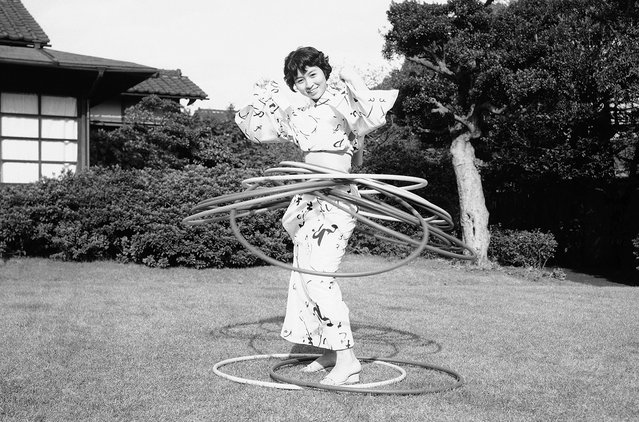
A young Japanese woman in a kimono takes part in the Hula-Hoop craze that swept America and Japan in this October 30, 1958, picture. (Photo by Mitsunori Chigita/AP Photo via The Atlantic)
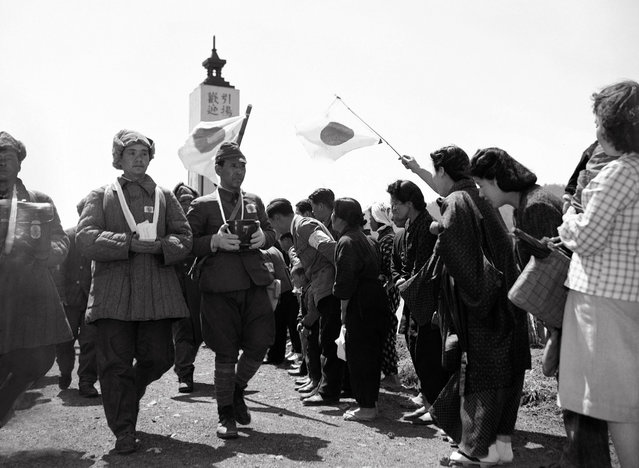
Women greet repatriated Japanese soldiers, formerly prisoners of war, on April 26, 1950. The men bear the ashes of their friends who died during their imprisonment. (Photo by AP Photo via The Atlantic)
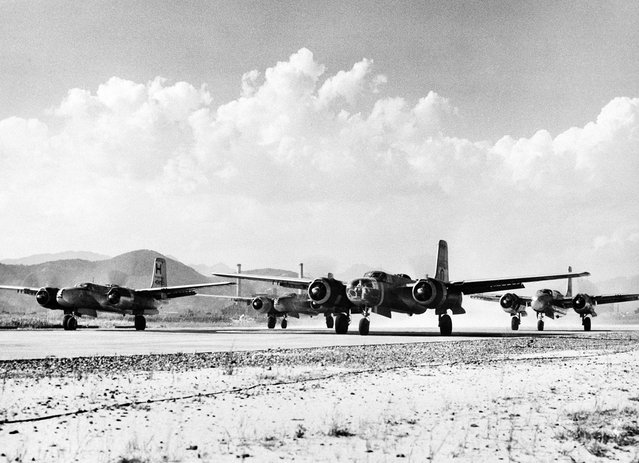
Engines of U.S. Air Force B-26 bombers are revved up shortly before taking off from Far East Air Force field in Japan on September 20, 1950, for combat missions in Korea. The twin-engine bombers were flying round-the-clock missions in support of United Nations ground forces. (Photo by AP Photo/U.S. Air Force via The Atlantic)
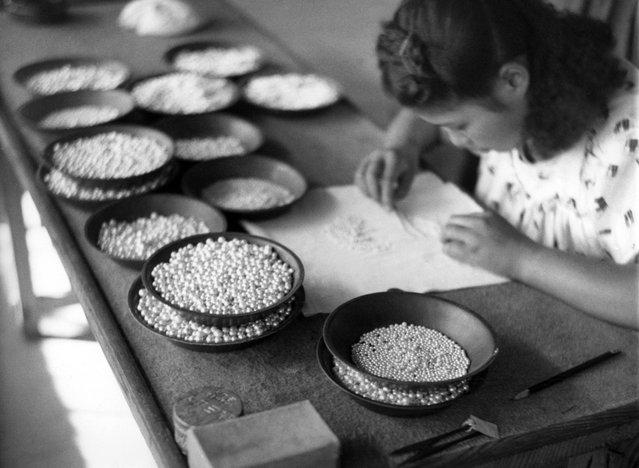
A Japanese girl carefully sorts cultured pearls raised on Kokichi Mikimoto's pearl farm near the tip of Japan's Ise peninsula on October 12, 1949. They are sorted according to color and size as well as shape. (Photo by AP Photo via The Atlantic)
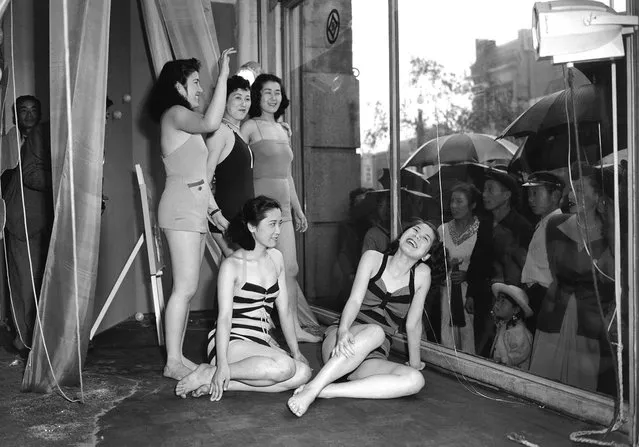
To draw the public's attention to a new line of bathing suits, a Tokyo department store used live models to show off the suits on June 5, 1950. The rain didn't bother the curious, and both the girls and the crowd seemed to like the idea of staring at each other through the glass. (Photo by AP Photo via The Atlantic)
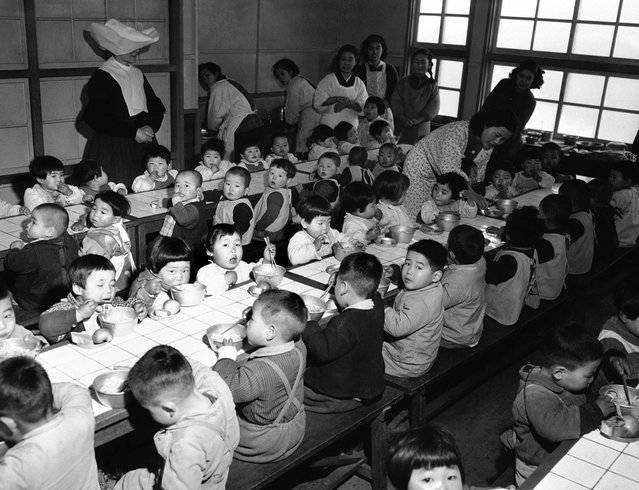
Dining room of an orphanage in Osaka, Japan, on February 19, 1951, where the 160 orphans were fed each day on food purchased by the Wolfhounds, the 27th Infantry Regiment of the U.S. Army. (Photo by Jim Pringle/AP Photo via The Atlantic)
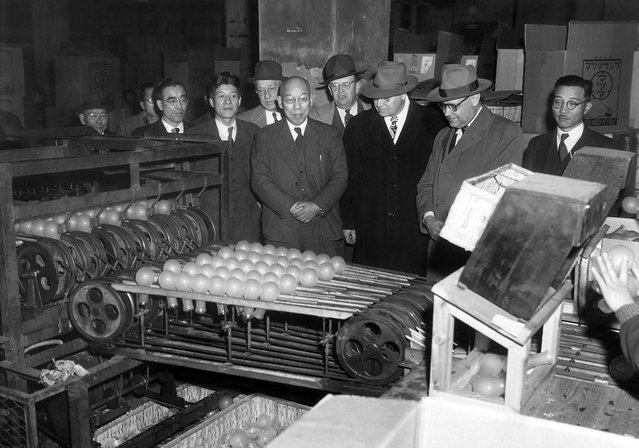
Industrial training experts watch a light bulb machine drop bulbs down to other workers who sort them according to defects at Tokyo Shibaura Electric Co. in Tokyo on January 25, 1951. (Photo by Arthur Curlis/AP Photo/U.S. Army via The Atlantic)
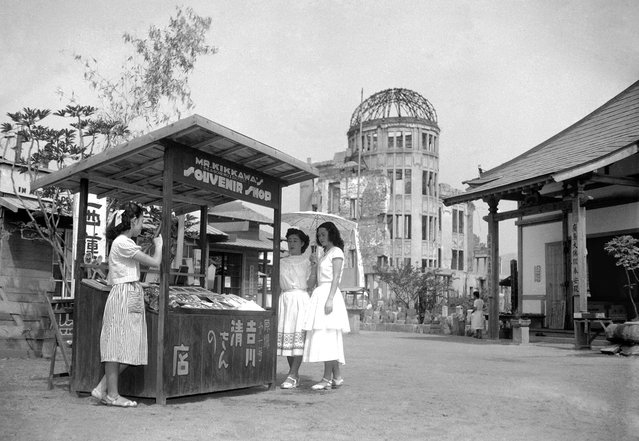
On August 3, 1951, six years after an atomic bomb was detonated above this spot in Hiroshima, a souvenir shop stands in the street near the shattered dome of the Industry Hall. The shop is operated by Kiyoshi Yoshikawa, who was injured in the blast. (Photo by AP Photo/Kyodo via The Atlantic)
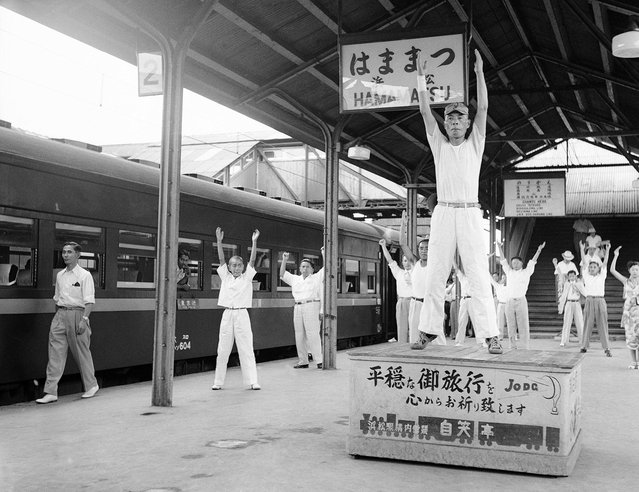
Passengers on a train traveling from Tokyo to Osaka go through three minutes of calisthenics under leadership of a drill master, during a five-minute stopover at Hammamatsu on August 27, 1952. This unusual service was set up to help travelers on the long journey limber up at the station which is about half way between the two cities. There is even music for the exercises, and a platform for the drill master. (Photo by Max Desfor/AP Photo via The Atlantic)
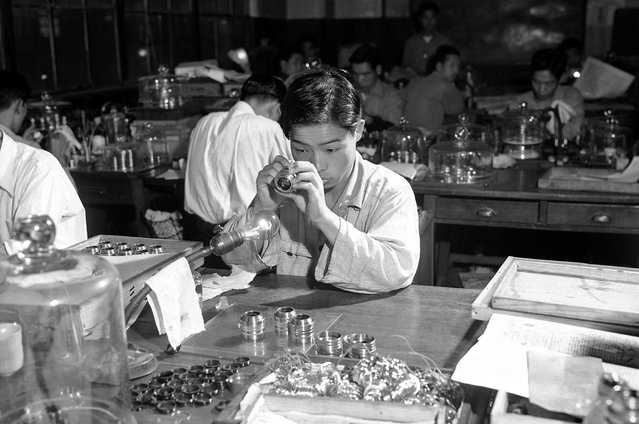
A lens is inspected at Tokyo's Nikon camera plant, on January 5, 1952. (Photo by Bob Schutz/AP Photo via The Atlantic)
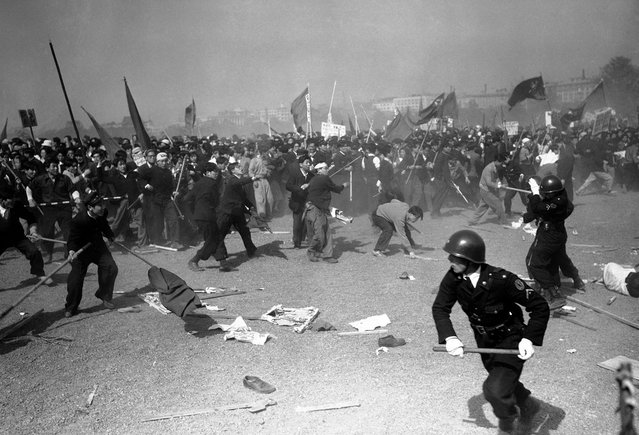
Pro-communist demonstrators stone Japanese policemen at the height of May Day riots in downtown Tokyo on May 1, 1952. Casualties were numerous on both sides as police used tear gas, guns and clubs to beat back the waves of rioters. (Photo by Max Desfor/AP Photo via The Atlantic)
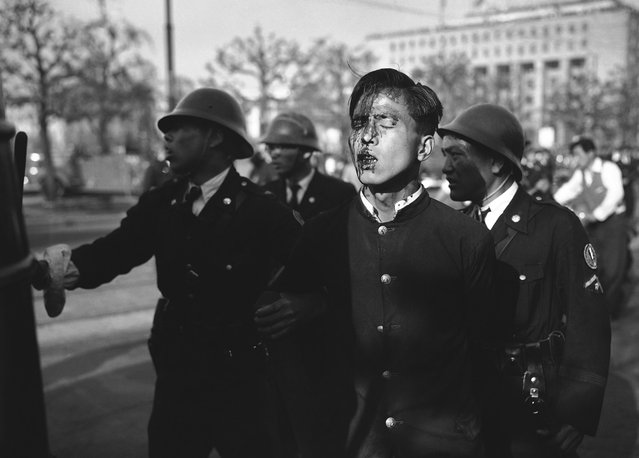
A dazed Japanese youth, his face bruised and bleeding, is led from the riot scene by a policemen after pro-communist demonstrators were dispersed near the imperial palace grounds in Tokyo on May 1, 1952. (Photo by AP Photo via The Atlantic)
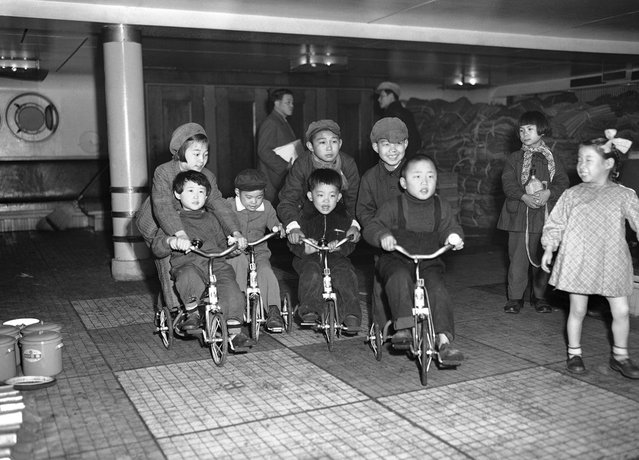
Children of repatriated families scoot around the deck of the Koan Maru as their parents prepare to disembark at Maizuru Bay, Japan, on March 24, 1953. The first group of repatriates to be returned from Communist China where they had been stranded since the end of World War II completed the formalities through the processing center at Maizuru and were released to go home. The first batch of 2,000 men, women and children came from North China on the Koan Maru. The bicycles were gifts from charitable organizations and placed on the ship when it left China. (Photo by Y. Jackson Ishizaki/AP Photo via The Atlantic)
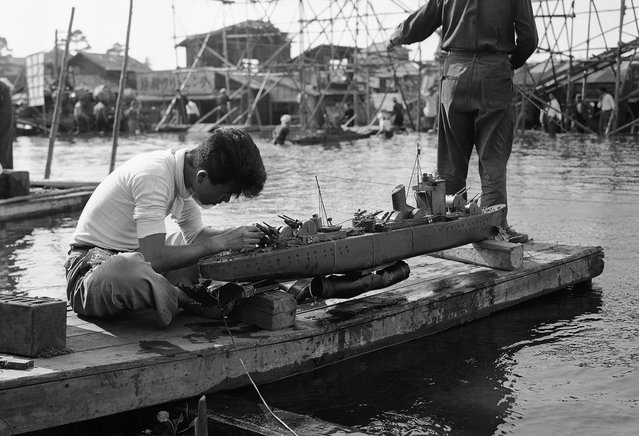
A movie studio workman rigs up one of the scale model warships used in filming a battle scene in a Japanese documentary that tells the story of the last day of the battleship Yamato, on June 8, 1953. (Photo by Yuichi Ishizaki/AP Photo via The Atlantic)
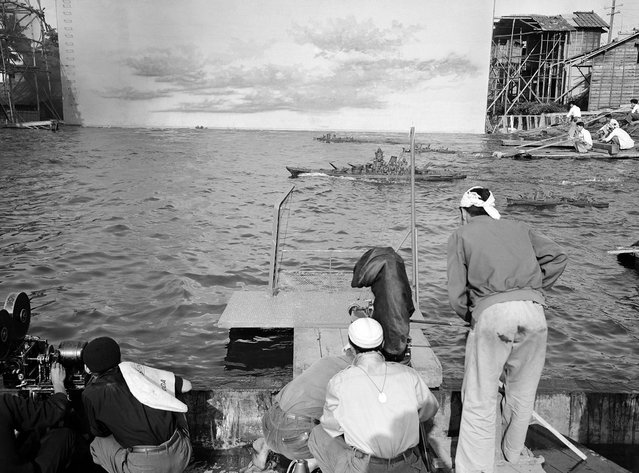
A scene from “Battleship Yamato” is filmed in the studio pool of Japan's Shin-Toho Motion Picture Company on June 8, 1953. The background of sky and water ends at left and right, a camera crew in the foreground. (Photo by Yuichi Ishizaki/AP Photo via The Atlantic)
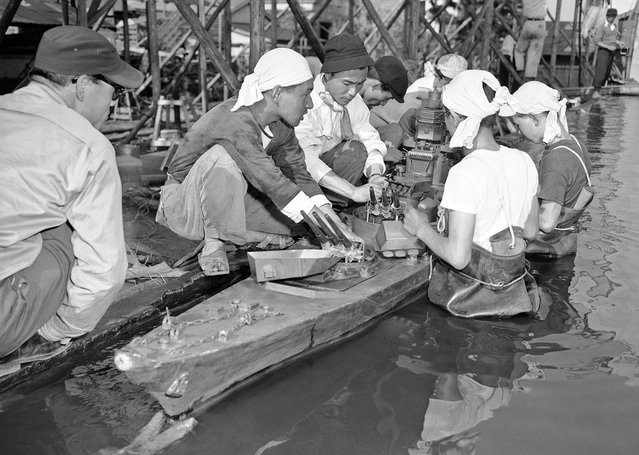
Japan's movie makers filming on the last day of the documentary about the Battleship Yamato. Studio men load shells into the guns of a model of the Yamato as they get it ready for the big scene on June 8, 1953. (Photo by Yuichi Ishizaki/AP Photo via The Atlantic)
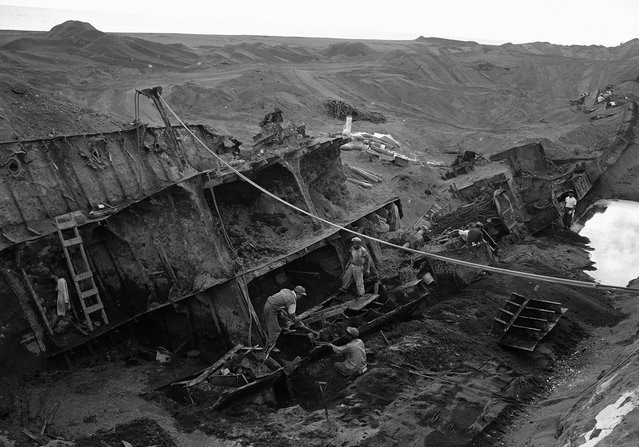
On the island of Iwo Jima, Japanese work crews cut up the wreckage of a naval vessel which was almost completely covered along the sandy beach on February 21, 1954. After a nine-year absence, the Japanese are back on the island of Iwo Jima, but as salvage workers. (Photo by AP Photo via The Atlantic)
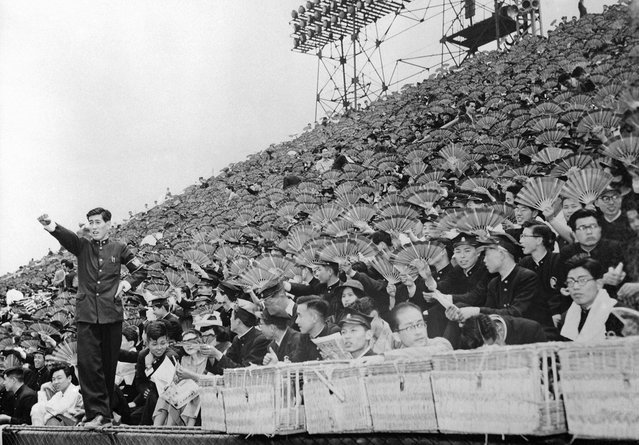
Spectators equipped with fans watch a baseball game between Waseda and Keio Universities at Meiji Park, Tokyo, on June 1, 1954. At left Japanese counterpart of American cheerleader leads rooters whose fans are painted with school colors. (Photo by AP Photo via The Atlantic)
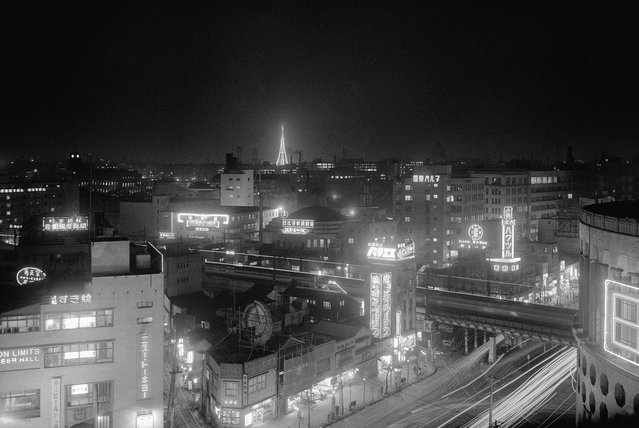
Ten thousand photo flashbulbs lit up a new television station and tower in downtown Tokyo on March 26, 1955, in what was called the biggest flash shot in the world. Radio Tokyo, in connection with a local flashbulb company, exploded the 10,000 bulbs on its new 516-foot television antenna to remind Tokyoites that it would begin telecasting on April 1. Thousands of camera fans crowded upper story windows and roof tops near the TV station to photograph the spectacle. (Photo by AP Photo via The Atlantic)
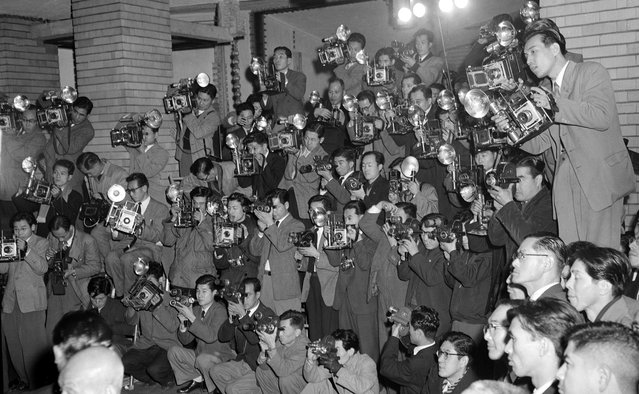
Forty-five cameramen photograph the new Japanese cabinet at the Prime Minister's official residence in downtown Tokyo on December 17, 1954. Japanese newspapers made a practice of assigning three or four photographers to cover an event from all possible angles. (Photo by AP Photo via The Atlantic)
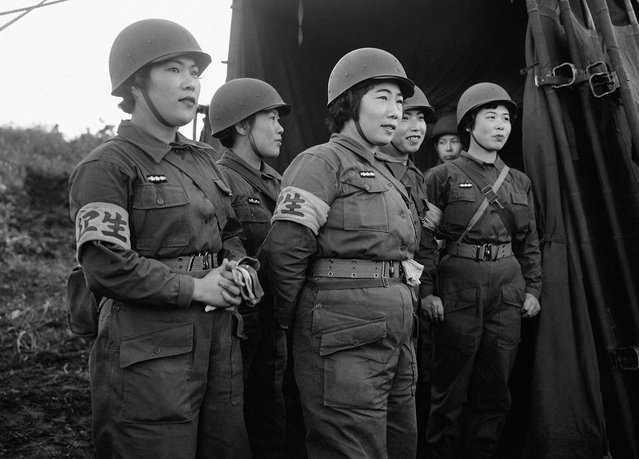
Women nurses of Japan's newly-formed Self-Defense Corps man an aid station on Hokkaido, Japan, during maneuvers on October 20, 1955. Japanese forces, using U.S. – supplied equipment engaged in their first post-war military exercises with a U.S. advisory group and other foreign military observers on hand to watch the defense maneuvers against an imaginary invader of the Japanese island. (Photo by AP Photo via The Atlantic)
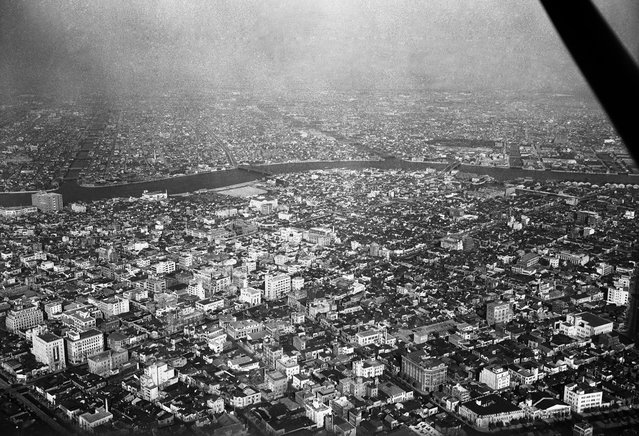
An area of Tokyo, seen from the sky on August 5, 1955. Modern buildings have wiped out the scars of flattened blocks. The Sumida River flows peacefully through the Hamacho district (foreground) and the Fukawaga district. Wholesale houses and warehouses occupy most of these districts. (Photo by AP Photo via The Atlantic)

Japanese girls Mitsuko Kuranoto, left, and Emiko Takemoto, survivors of the Hiroshima atomic bombing 10 years earlier, face newsmen and photographers at the Mitchel Air Force base on Long Island, New York, on May 9, 1955. Twenty-five Japanese girls, scarred by the blast, made the 6,700 mile trip to New York cautiously hopeful that the miracle of plastic surgery can give them new faces. (Photo by Jacob Harris/AP Photo via The Atlantic)
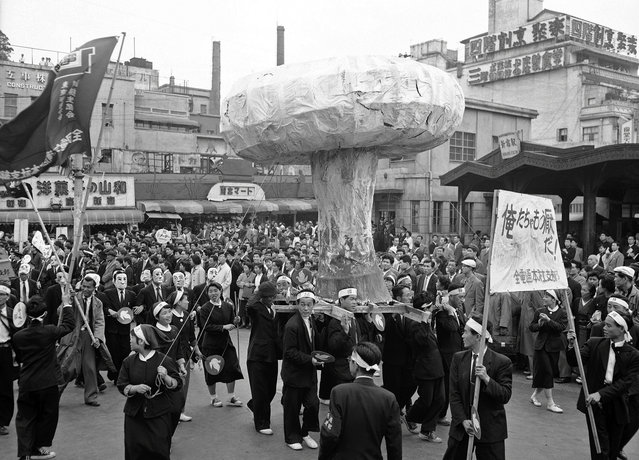
A huge replica of an H-bomb mushroom cloud is carried through the streets of Tokyo, Japan, on May 1, 1957, in protest of a planned British H-bomb test at Christmas Islands. (Photo by AP Photo via The Atlantic)
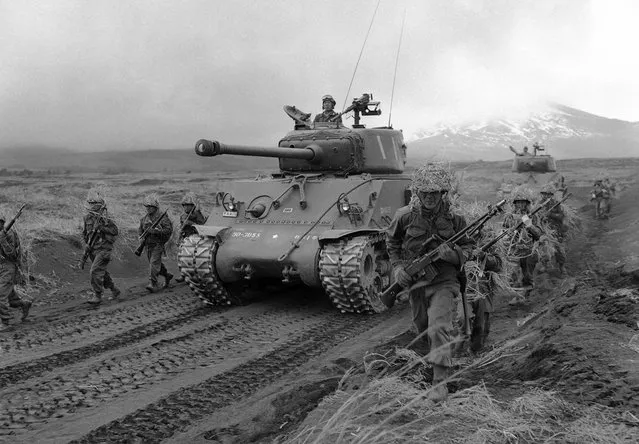
The transition from former enemy to ally is evidenced by these GI-clad Japanese army volunteers during maneuvers at the Fuji Army School outside of Tokyo on May 15, 1957. Armed with American-made weapons and supported by a U.S.-supplied tank, the soldiers were part of the 160,000-man ground, sea and air self-defense forces undergoing intensive training for the defense of the Japanese homeland. (Photo by George Sweers/AP Photo via The Atlantic)
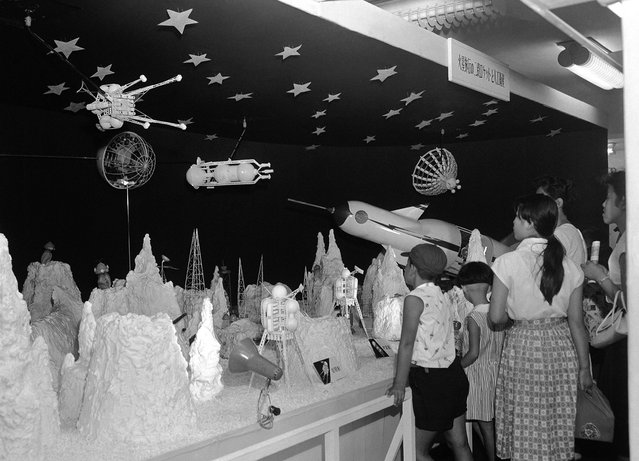
Japanese children press close to view an “outer world” space exhibit in a Tokyo department store on August 19, 1958. There they saw a rocket which landed on the surface of the moon, strange looking people of the moon walking around, and even a satellite going around the moon. (Photo by AP Photo via The Atlantic)
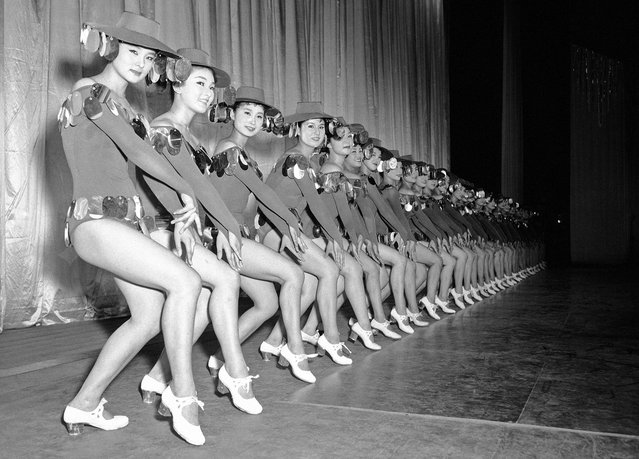
Japanese dancers of the Schochiku dancing troupe rehearse one of their new numbers in the “natsu-no-odori” summer dance scene which they performed at the Kokusai Theater in Tokyo on July 11, 1958. (Photo by Mitsunori Chigita/AP Photo via The Atlantic)
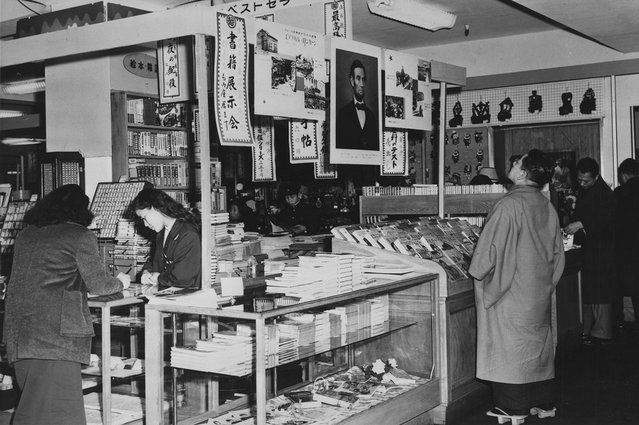
Interior of a Tokyo department store in 1959, where a Japanese man wearing Geta, traditional wooden footwear, looks up at a poster-sized portrait of Abraham Lincoln hanging with two other posters about Lincoln's life. (Photo by Library of Congress via The Atlantic)
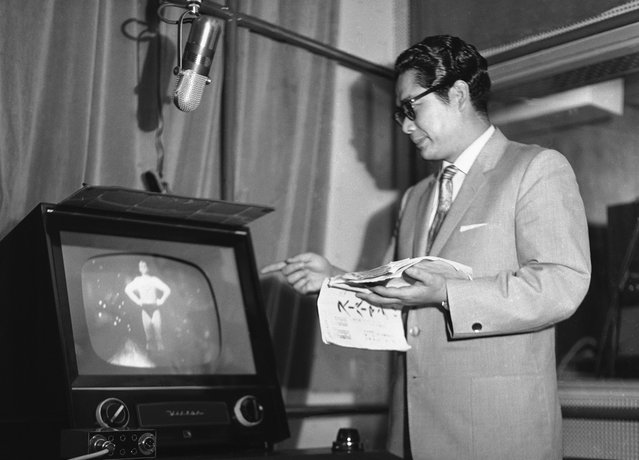
Tooru Ohira, the Japanese voice of television's Superman, watches actor George Reeves closely while he dubs Japanese words for the show on July 7, 1959. Television has made a strong impression on the Japanese from Emperor Hirohito down. About 99 percent of Japanese TV shows are American, including the Emperor's favorite, “Superman”. (Photo by AP Photo via The Atlantic)
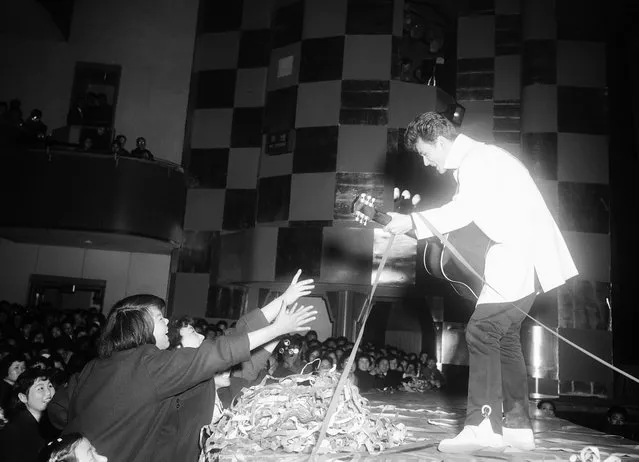
Micky Curtis, an Elvis Presley-style singer, strums his guitar and sings just beyond reach of female admirers in the Nichigeki Theater in Tokyo on February 18, 1958. Japan was bouncing in a Rock 'n Roll craze as the Rockabilly music of the west jolted its way to the top of Japan's Hit Parade. Screaming, moaning, applauding teenagers packed the theater, throwing steamers toward the stage which the lucky singer dodged with timely gyrations. (Photo by AP Photo via The Atlantic)
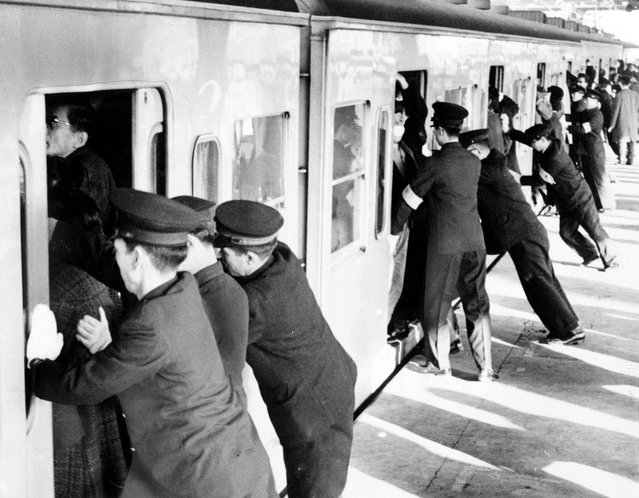
College students employed as uniformed “pushers” cram commuters into railroad passenger cars in Tokyo. (Photo by Library of Congress via The Atlantic)
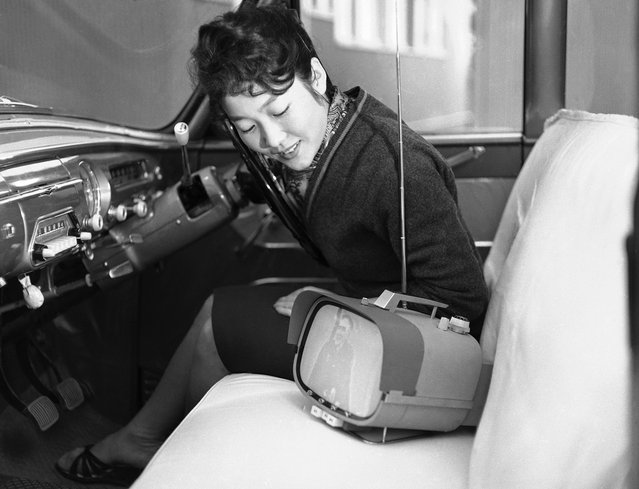
Tomiko Kawabata sits in her car and admires her new all-transistor, portable television set which Sony put into mass production, in Tokyo, on January 5, 1960. The set, which has an eight-inch screen, is powered by a storage battery good for three hours when used outdoors and it can be operated on an AC 200-volt current indoors. (Photo by AP Photo via The Atlantic)
14 Mar 2014 09:20:00,
post received
0 comments
